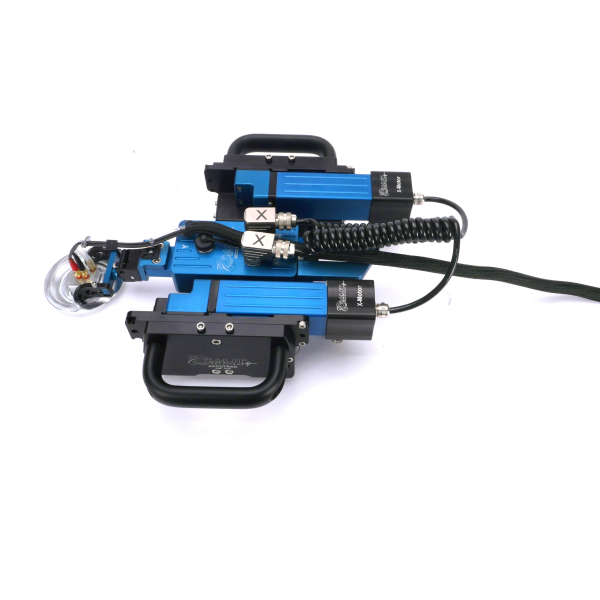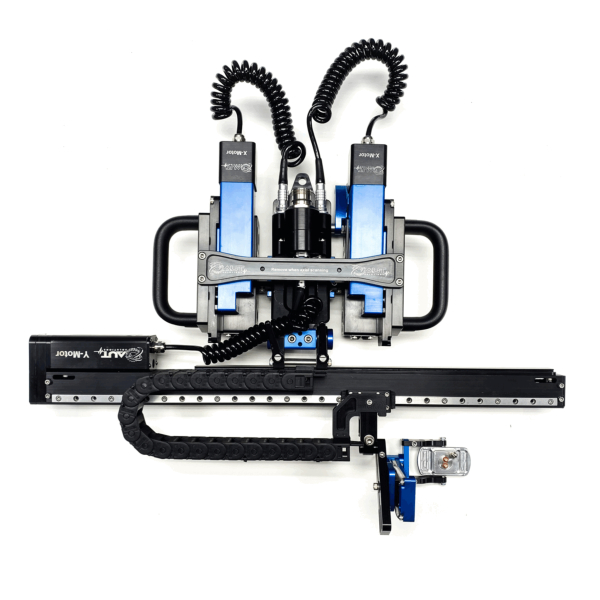High Temperature Hydrogen Attack (HTHA) Detection in Welded Pressure Equipment
Industrial Context Description
HTHA affects carbon steel and low-alloy steel equipment that operates under high temperature (>200°C) and hydrogen partial pressure, such as pressure vessels, piping, nozzles, and welds. These components are commonly found in refineries and petrochemical plants, particularly in hydrotreating and hydrocracking units.
At-risk areas include welds and heat-affected zones, where residual stress and microstructural vulnerability favor the formation of methane-induced microcracks. API 941’s Nelson Curves guide operators in identifying conditions favorable to HTHA and planning mitigation strategies such as routine inspections and materials upgrade.
Industrial Pain-Point
HTHA is difficult to detect, progresses internally, and can cause sudden rupture of critical components. The economic and safety risks are immense:
- Catastrophic failures (explosions, toxic leaks)
- Extensive shutdowns
- Regulatory liabilities
Traditional UT techniques (velocity ratio, backscatter) have major limitations:
- Poor sensitivity to early-stage damage
- High false positive rates
- Inability to quantify depth
- Operator-dependent interpretation
- Challenges with dirty steel/inclusions
The industry lacks standardized, high-resolution tools capable of reliably detecting and characterizing HTHA across all stages.
Description of EIG Solution
EKOSCAN INTEGRITY provides a robust inspection suite conforming to the latest API RP 941 (2020) update, integrating:
TOFD (Time-of-Flight Diffraction):
- Sensitive to early HTHA microcracks
- Ideal for welds and thinner components
- Detects diffracted signals from internal defects
PAUT (Phased Array Ultrasonic Testing):
- Multidirectional imaging in a single scan
- Supports 64–128 element probes
- Enables accurate detection and high repeatability
- Validated by MTI using realistic mockups
TFM (Total Focusing Method):
- Uses FMC/PWI acquisition for full-depth coverage
- Enhanced resolution and defect characterization
- Now standardized in ASME V and ISO 23864/23865
PCI (Phase Coherence Imaging):
- Ideal for diffuse, omnidirectional microcrack detection
- Complements TFM with better noise rejection
- Not yet codified, but highly effective in early-stage HTHA
Equipment & Tools by EKOSCAN:
- Mockups: CALHTHA-25/50, PATYPE19675A
- Probes: MTI-validated, optimized PAUT (64/128 element)
- Scanners: Handscan (1-line), Weldscan (circumferential), Accutrak (automated, modular, steerable)
- Training: offered by EKOSCAN experts on advanced commercially-available flaw detectors.
Industrial Gains
Early warning capability before catastrophic failures
Reduced false calls and more confident go/no-go decisions
Improved productivity via high-speed full-coverage scanning
Lower training threshold thanks to high-resolution visuals
Data traceability for lifecycle monitoring
Return on investment via
70% reduction in downtime-related losses
Up to 80% improvement in detection reliability
Minimized inspection time and technician hours
Sources
- Lozev, M.G., Neau, G.A., Reverdy, F., Lonné, S., Cence, H., et al. Assessment of High-Temperature Hydrogen Attack Using Advanced Ultrasonic Array Techniques. Materials Evaluation, Vol. 78, No. 11, Nov 2020, pp. 1223–1238. DOI: 10.32548/2020.me-04183
- Krynicki, J.W. (ExxonMobil). Probabilistic Risk-Based Approach for Performing an Onstream HTHA Inspection. NACE/AMPP Conference Paper, 2006.
- Reverdy, F., Wassink, C., Fromentin, O. HTHA Inspection Using Ultrasonic Techniques. Ultrasonic Testing Conference 2021, NDT.net
- Bleuze, A., Cence, M., Schwartz, D., Chelminiak, G. On-Stream Inspection for HTHA. ECNDT 2006, NDT.net
- Dupont-Marillia, F., Krynicki, J., Belanger, P. Early Detection of HTHA Using FMC and Post-Processing. ResearchGate
- Trimborn, N. (Mistras). Detecting and Quantifying HTHA. WCNDT 2016, NDT.net
- Nugent, M., Benac, D., Berg, S. (BakerRisk). API RP 586 Inspections for HTHA and API 941 Remaining Life Prediction. BakerRisk White Paper
- Inspectioneering Journal. Into the Grain – Advancements in HTHA Detection Methods. Inspectioneering.com
- American Petroleum Institute (API). API RP 941 and API RP 586.
See our other case studies
No other case studies in this sector…





